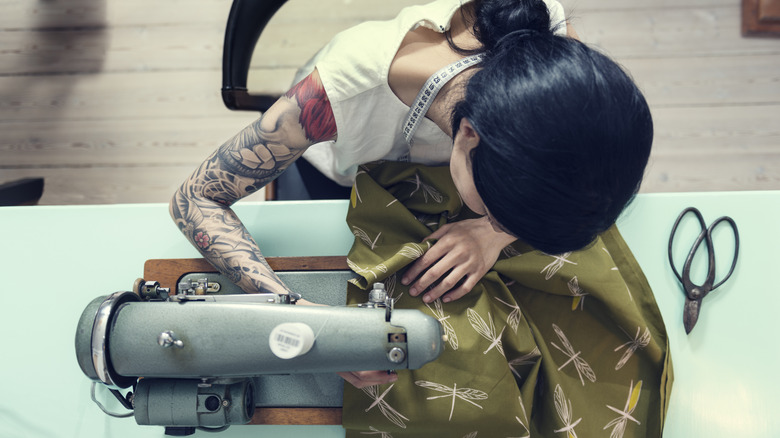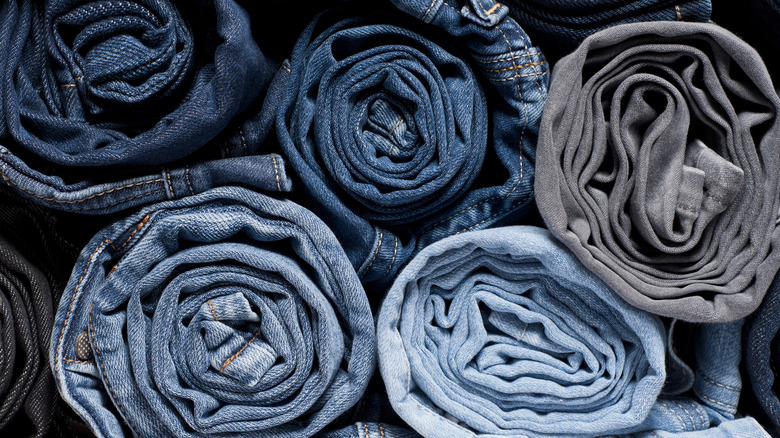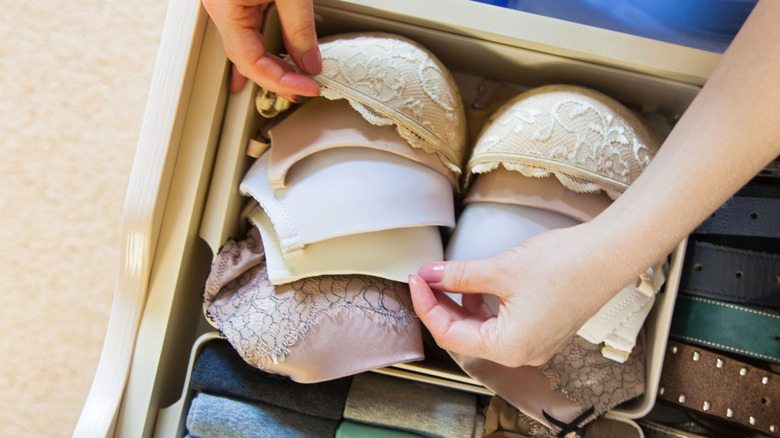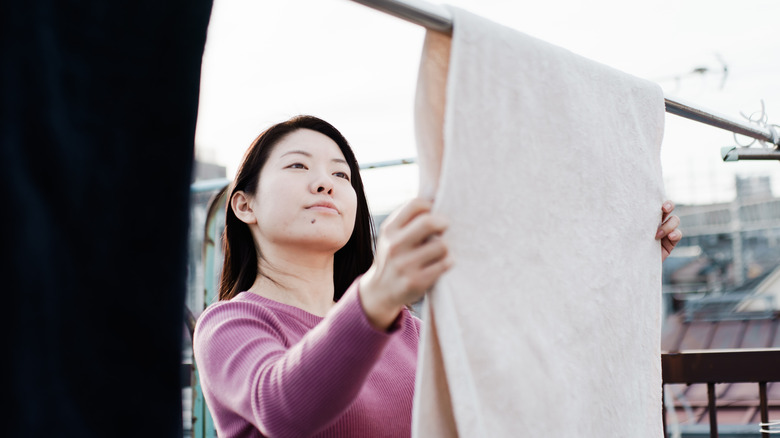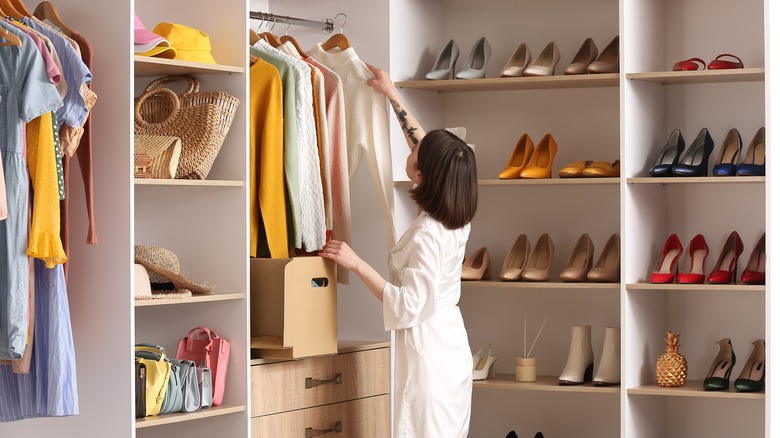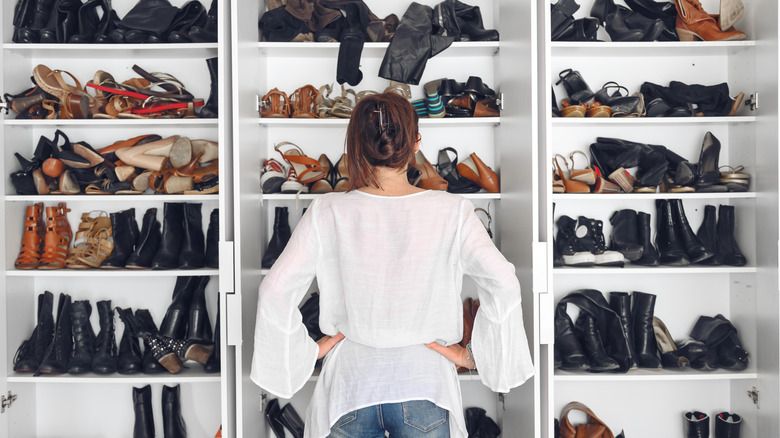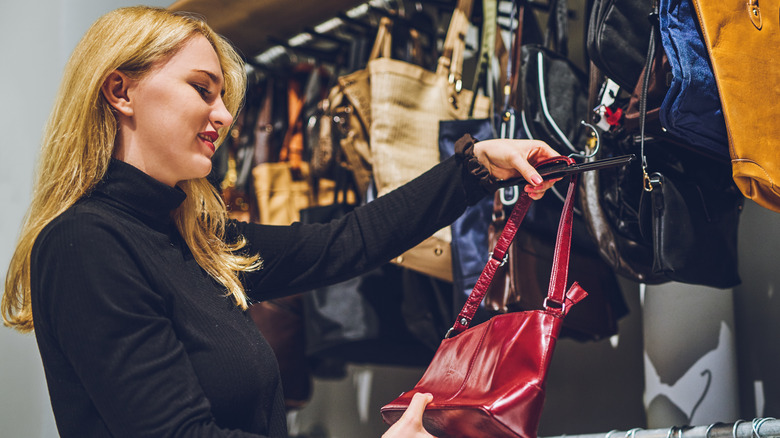How To Get The Most Mileage Out Of Every Piece In Your Wardrobe
As we learn more and more about the detrimental impact the fashion industry is having on the world, keeping our clothes for as long as possible is becoming more important than ever. Shockingly, Earth.org reported in 2022 that for every 100 billion clothing garments produced every year, an eye-watering 92 million tonnes ends its life in landfill. As if that's not bad enough on it's own, the fashion industry is also responsible for a whopping 3% of the world's CO2 emissions and 20% of water pollution across the globe. With figures like that, it goes without saying that the rate in which clothes are being produced and discarded just isn't sustainable.
Thankfully, as we learn more and more about the truly devastating impact we're having on the world, we're turning our attention to making a change. Through initiatives like the circular fashion movement, we're learning more about how we can slow down, and hopefully end, the fashion industry's wasteful ways.
One of the very best ways to do your part is actually pretty easy. All you have to do is wear the clothes you have longer instead of buying new and tossing the old out. And Women.com has a few tips on how you can do that.
Prepare to repair
One of the best ways to keep your clothes around longer is to repair them as soon as they need it. For example, wearing a sweater you know is coming apart at the seams because the problem is not yet visible will likely only make the issue worse, potentially rendering it unwearable. If you repair any holes, rips, or tears as soon as you notice them, you're much more likely to be able to hold onto your garment for longer. If you don't feel you have the skills to patch it up yourself, never fear! Support a local tailor and take your item or items there instead. As Orsola de Castro, co-founder of the fashion activist organization Fashion Revolution, told The Guardian, "They'll fix niggly things such as dropped hems, change the zips on evening gowns, or take things in and let them out."
The same can be said for upscaling items that may no longer be wearable. By grabbing your needle and thread and updating your old piece, you can create something totally stylish and new. "Many people no longer wear their favorite item because it no longer fits them, or because they no longer like the style. A simple alteration like taking in at the waist or shortening a full-length dress into mid or short length can give you what feels like a fresh new outfit, and also keep your old favorites updated with the latest style," head seamstress at Clothes Doctor, Chris Morton, told Eco.
Denim has different rules
If it's denim you're looking to take care of, it may have different care instructions than the majority of other items in your wardrobe — so be sure to check the label. Denim is often more susceptible to fading and losing its shape, so as Creative director of Edwin USA, Catherine Ryu, recommended to PopSugar, you should probably aim to wash your denim around every four or five wears. That will help keep the items in tip-top shape. Levi Strauss & Co. even went one step further than that, suggesting you can leave your denim out of the wash for up to 10 wears. Then, when you do pop denim items in the machine, you should put them on a cold wash.
Another great tip is to wash your jeans inside out to help prevent fading, as Adam Cameron, co-founder and design director of The Workers Club, told the Robb Report. Cameron also recommended keeping your denim out of the spin dryer, because that can lead to shrinking. "Instead, wash them on a gentle cycle and hang them to drip-dry. If you spin-dry jeans, you'll damage the fibers in the denim," he shared. "This makes them less durable, and it gives your denim a fluffy surface texture that prevents it from fading properly." Equally, before you throw any kind of denim item in the washing machine, you'll also want to make sure you zip up any zippers so they don't get damaged or misshapen.
Lingerie needs different care too
Just like denim, your delicates also need to be treated differently from other items in your wardrobe because they don't have quite the same resilience. Let's be honest, good-quality lingerie can be pretty expensive, so it's in your best interest to keep it looking as new as possible. One of the best ways to keep things like bras and underwear in their best shape is to put them in a mesh bag before washing them in a washing machine. That'll prevent your items from flying around too much and potentially getting caught or torn. If you can, though, it's always a good idea to handwash delicate lingerie items so you can ensure they get the care they need.
When it comes to storing your undergarments, Araks Yeramyan, the founder of Araks, told The New York Times that you want to make sure your underwear pieces aren't all bunched up in a drawer and have some room to breathe. Not only will this keep your items fresher for longer, but it'll help stop things like underwired or padded bras from getting warped and bent.
Make sure you're washing correctly
We already know denim and lingerie need extra care when washing, but did you know that everything in your wardrobe could probably benefit from being washed a little less? "Washing garments too often can actually cause damage to the fibers and hence decrease the lifespan," Chris Morton told Eco. "This is especially true with dry cleaning, which uses harmful chemicals that flatten the natural fiber follicles in some fabrics." Instead of risking over-washing your items, try removing stains immediately with a damp cloth or sponge instead of throwing the whole thing in the wash at the end of the day. "The majority of stains can be removed with a quick damp sponging," Orsola de Castro of Fashion Revolution explained to The Guardian.
You may also want to turn down the temperature you're washing at. You'll have to check the labels on each product first to make sure it's okay, but if you can go lower without affecting your clothing, it's a good idea to take some of the strain out of your clothing's lifecycle. "Wash clothes at a low temperature with a gentle and natural laundry detergent to keep the fabric clean and soft, and also to prevent color fading," Morton shared.
Most importantly though? Always, always, always check the label before turning on your washing machine. "If something is made from good-quality wool, such as a man's suit, it's designed to be brushed clean and not washed," de Castro pointed out.
Dry your light clothes outside (if you can)
If you're lucky enough to have a yard or access to a clothes line or drying rack, make the most of it by drying your lighter clothes outside when you can. Not only does it have much less of an impact on the environment when compared to energy-guzzling machines like a tumble drier, but it's also a lot gentler on your clothes to help them stay in top condition. This tip is only really recommended for lighter-colored clothing though, as darker items may be susceptible to fading if left in natural sunlight too long.
Not only will line drying your wardrobe make it feel fresher, but it's also a great way to avoid adding even more chemicals to your wash cycle, which may even irritate some people's skin. The same goes for drying your clothes indoors on a drying rack. Tumble drying often means using more fabric softeners and other products to try and recreate that fresh, outdoor feeling, but drip-drying will give you the real thing with a more natural scent.
Buy quality clothing from the start
We know it can get costly to always go for the highest quality available, but if you can, try to avoid fast-fashion brands and purchase well-made clothing. These items are designed to last longer from the very start because they're created in more ethical environments with the intention of being re-used time and time again. That means they're less likely to break down in the washing machine, get holes, stretch, or come apart at the seams. By going for better-quality from the beginning of your clothing's lifecycle, you've already got a head start on getting more mileage out of your items, as they're more likely to hold their shape and color in the wash.
A good way to check if what you're buying will go the distance is to look inside at the label before you put it in your basket. "The first thing to do when you're looking at a piece of clothing is turn it inside out and pull at every piece of string you find. When clothes are cheaply made, the seams are often shabby. If it starts to unravel — don't buy it," Orsola de Castro told The Guardian. Remember, too, that expensive doesn't always mean better quality, and there are plenty of reasonably priced items out there that will stand the test of time.
Get to know your iron
Ironing clothes is one of those necessary chores not many people really love, but it just has to be done. In order to keep your clothes around longer though, you'll want to get to know your iron as well as you possibly can so you can tailor the way you use it to what you're trying to smooth out. Before putting all that heat on your clothes, always check the label to see the care instructions and see if it can handle the temperature and steam you've set your iron to.
If you know your iron tends to run hot or it produces a whole lot of steam, consider turning it down to a lower setting to take the pressure off your clothing — or match the setting to the piece on your ironing board rather than doing everything on the same one. Think of it like using heated tools on your hair. The less heat you use, the better it is for your hair's health.
That's why, if you're able to, it's recommended that you opt for a good steamer on your clothes instead of a traditional iron. A steamer will have less of a harsh, and potentially detrimental, impact on your fabrics.
Get your wardrobe organized
One of the most important ways to make sure your clothes last as long as they possibly can is by doing your research on how best to store each item. Some things, like dresses or jackets, may be better hung up, while others, like pants or shorts, might be better folded and put away in a drawer. By storing things properly, you'll be less likely to have to repeatedly wash or iron your items to get out any stale odors or creases.
To give your garments the space they deserve, keep your storage space properly organized and clear out what you don't wear regularly anymore. "Correct storage can really prolong the lifespan of a garment. Store all clothes in a cool and dry space to protect them from damp, sunlight, and heat, which can all cause damage," Chris Morton told Eco. "It's important to not overfill your wardrobe, as clothes need breathing space — this will also prevent wrinkling and color loss from clothes rubbing together," Morton added. There are plenty of sustainable ways to purge your wardrobe of those items you know you'll never wear again, too!
Morton also championed the idea of making sure your items are clean before putting them away to avoid attracting moths, and investing in things like moth balls if those pesky bugs just won't stay away. That way, you'll also avoid getting other items in your wardrobe dirty, which means less washing.
Give your shoes room to breathe
When it comes to shoes, resist the urge to store them on top of one another — particularly if they're not in boxes. Rather than stacking them up or even just throwing them on the floor or a shelf, to keep your footwear at its best, it's worth investing in a shoe rack or shoe tree to make sure they don't get crushed or misshapen. Giving your shoes their own space will not only ensure they stay in shape, but it will also keep any embellishments intact and give them room to breathe. That will help prevent any odors from getting trapped, since items will have space to dry and air out if you've been out in the rain or sweating on a hot day or while working out. Depending on your body, things like odor eaters and insoles are also imperative for keeping your shoes fresh for longer.
Another minor purchase that will keep your shoes going for years? A shoe horn. The device was created to make slipping on a shoe much easier, but it will also ensure the back stays intact to preserve the integrity of your footwear. "They are indispensable for keeping the shape of the shoe," president and creative director or Stubbs & Wootton, Percy Steinhart, told The New York Times.
Make your leather and suede items waterproof
If you have a lot of leather or suede items in your wardrobe, the best way to keep them looking their best is to make sure they're waterproofed. Otherwise, one trip out in the rain could ruin your goods before you've even got them into your regular rotation. A lot of items made out of these materials won't be automatically made waterproof, so this is something you'll more than likely have to take care of yourself at home. There are a number of different products like sprays and sealants on the market to do this, with some being targeted at specific items like shoes or handbags. Equally, checking the weather forecast before you head out and choosing your outfit accordingly will help you to keep your clothes usable for longer. If you know the weatherman is forecasting rain, maybe leave anything that's not going to be able to withstand the water at home that day.
For items like Timberland boots that may also need a little extra TLC, Charles Ross, sustainability expert and lecturer at the Royal College of Art, told The Guardian, "Every six weeks I wash off the dirt and put on a leather conditioner to keep them going for longer." This advice can go for almost anything in your wardrobe, as it's always worth pulling out old pieces every once in a while to check their condition and see if they need any maintenance.

